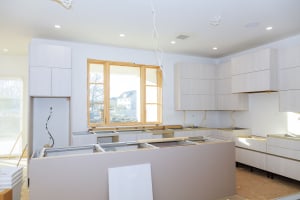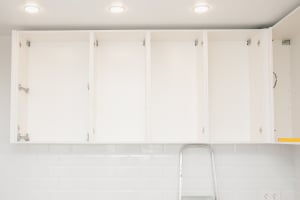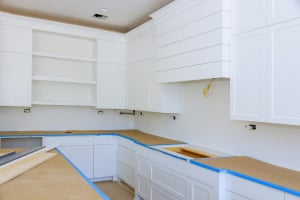If you’re looking to create a beautiful wall with the added benefits of providing storage and visual interest, a slatwall might be the perfect option. These days, hanging these panels is one of the most popular ways to beautify your home with wood slatwall panels. They are extremely versatile, coming in different shapes, sizes, materials, and colors, as well as with added touches and finishes. Depending on your needs, there are plenty of options to help you get the right slatwall for your home, office, or commercial space.
An added advantage of slatwalls is that they are easy to install. In this guide, we’ll explain how to make a slatwall board and the best way to hang slatwall panels.
Gather Your Materials
To begin your project, gather all the necessary materials. You can cut slatwall panels and hang them yourself if you have a drill, wall anchors, screws, and paneling adhesive.
If you plan on painting the panels, make sure to purchase paint that is designed for use on wood surfaces. Additionally, depending on where you are installing the panels and what type of surface is present (e.g., drywall or plaster), you may also need construction adhesive or nails to secure them more securely.
Prepare Your Walls
Before hanging the panels, remove any existing fixtures from the wall, such as outlet covers or light switches, so they can be reattached after the installation. Then, use a level to mark where you’ll be installing each panel–this will ensure that everything remains even throughout the installation process.
Secure the Panels to the Wall
You are now ready to install your panels. Using either construction adhesive or nails (depending on your type of wall surface), attach each panel one at a time starting at the top left corner and working down towards the bottom right corner in a zigzag pattern until all panels have been hung accordingly. Make sure that each panel is flush against the wall before moving on to the next one so that there are no gaps between them once they are in place.
Drill Pilot Holes for Screws and Anchors
Once all panels are installed securely with either nails or adhesive, use your drill and a masonry drill bit designed for wood surfaces (or a metal drill bit if hanging over drywall) to carefully drill pilot holes into each panel. The holes will secure the panels with screws and anchors. Be sure not to drill too deep into any single hole so as not to damage underlying walls. Do so just enough so that the screw heads can fit snugly inside without protruding out the other side.
Secure Each Panel With Screws and Anchors
Once all pilot holes have been drilled, it’s time to secure each panel with screws and anchors. Using either metal or plastic toggle bolts (for drywall installations) or masonry anchor bolts (for plaster or concrete installations) insert them into their respective pilot holes and tighten them with your drill until secure. After all screws and anchors have been tightened firmly, repeat steps three to five to complete the hanging of the slatwall.
Seal to Complete Installation
Finally, use an appropriate sealant product, such as caulk, around the edges where two slats meet together to create a professional finish and to seal off any potential drafts that might come through from adjacent rooms. Once this is done, you can simply paint or add other chosen finishes to complete your slatwall installation.
Final Thoughts
Hanging slatwall isn’t too tricky once you get the hang of it. With a little patience and attention to detail, you’ll have it up in no time! If you’re looking for a way to add a touch of class to your home or office, slatwall panels are a great option. They are easy to install, come in a variety of styles and finishes, and can be used to create a variety of different looks.













